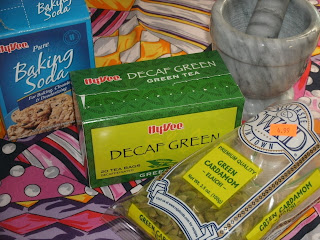Ethiopia
Ethiopia
Today we again travel to the horn of Africa. Actually just a bit inland from the horn to Ethiopia. I didn't realize that Eritrea was once part of Ethiopia. Without it, Ethiopia is now landlocked. I also didn't know that Addis Ababa (the name of the capital city) means "new flower". These days, it seems that Ethiopia is known for growing teff, one of those "super foods" people go nuts over. While I would be intrigued to try it since it is part of east African cuisine, I won't buy it because western demand is taking it away from the people who really need it for daily food.
Like Kenya, Ethiopia is a destination for fossil hunters and researchers who study early human ancestors. This is the home of "Lucy", a 3.2 million year old human ancestor. I saw a reproduction of Lucy's skeleton at the Museum of Nairobi. They also had a diorama set up of how they thought the landscape looked with models of how Lucy and her relatives were thought to look like in life. We thought that it would be really funny if the models were just slightly animated, like if you looked away, and looked back, they would have moved just a little bit from their original position. American college student humor.
Ethiopia has had at least 2 conflicts with Italy in its history. In 1896 they defeated colonial Italy, and they were invaded by Italy during WWII. After they were freed by the Allies, Ethiopia became one of the first interdependent nations to sign the charter of the United Nations. They provided support for the decolonization of Africa, and the cooperation of countries across the continent. From what I have read, it seems most things are centered around Addis Ababa, and that there is very little for people in the rural regions. Many years ago, there was a documentary on PBS talking about the lack of obstetric care for women in rural areas, and the hospital that was opened to treat them for birth related injuries. "A Walk to Beautiful" offers a nice insight into the lives of the women who live there, and the challenges they face.
When I was researching tea preparation, I found that Ethiopia and Eritrea were very similar. Now I know why. The 2 countries use a slightly different blend of spices, so they will each have their own post. Today, we are making tea Ethiopian style (at least according to the internet). I'm kind of glad I'm not doing coffee since a traditional coffee ceremony can take up to 3 hours to perform. Then again, I couldn't get the raw beans or the equipment to process them anyway, let alone another person who was willing to hang around for the hours it takes to prepare.
For today's preparation, we have 2 cups (500 ml) water, 2 teaspoons of black tea, ginger, cinnamon, and a cracked cardamom pod.
Like Kenya, Ethiopia is a destination for fossil hunters and researchers who study early human ancestors. This is the home of "Lucy", a 3.2 million year old human ancestor. I saw a reproduction of Lucy's skeleton at the Museum of Nairobi. They also had a diorama set up of how they thought the landscape looked with models of how Lucy and her relatives were thought to look like in life. We thought that it would be really funny if the models were just slightly animated, like if you looked away, and looked back, they would have moved just a little bit from their original position. American college student humor.
Ethiopia has had at least 2 conflicts with Italy in its history. In 1896 they defeated colonial Italy, and they were invaded by Italy during WWII. After they were freed by the Allies, Ethiopia became one of the first interdependent nations to sign the charter of the United Nations. They provided support for the decolonization of Africa, and the cooperation of countries across the continent. From what I have read, it seems most things are centered around Addis Ababa, and that there is very little for people in the rural regions. Many years ago, there was a documentary on PBS talking about the lack of obstetric care for women in rural areas, and the hospital that was opened to treat them for birth related injuries. "A Walk to Beautiful" offers a nice insight into the lives of the women who live there, and the challenges they face.
When I was researching tea preparation, I found that Ethiopia and Eritrea were very similar. Now I know why. The 2 countries use a slightly different blend of spices, so they will each have their own post. Today, we are making tea Ethiopian style (at least according to the internet). I'm kind of glad I'm not doing coffee since a traditional coffee ceremony can take up to 3 hours to perform. Then again, I couldn't get the raw beans or the equipment to process them anyway, let alone another person who was willing to hang around for the hours it takes to prepare.
For today's preparation, we have 2 cups (500 ml) water, 2 teaspoons of black tea, ginger, cinnamon, and a cracked cardamom pod.
I placed everything but the tea in a saucepan and brought to a boil. I added the tea, reduced the heat to a simmer, and left for 5 minutes. Then it got strained into a cup.
Here it is. When I took the lid off of the pan, I thought that I had put way too much cinnamon in. When I tasted it, however, I thought that the spice blend was just right. Since I didn't want to dirty up a second cup, I let the rest sit in the pan and keep steeping. I will say the second cup was a bit sharp when I got to the bottom of the cup, but overall, it was a nice cup of tea. I think I could have actually used 2 cardamom pods if I wanted to. I find a little cardamom goes a long way, but the strength of the tea could handle it.





This sounds spicy!
ReplyDeleteNo teabag can hold this kind of tea.
Delete